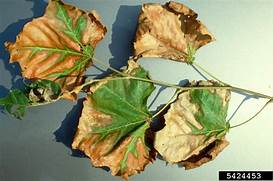Dandelions are the number one weed that everyone has fought to get rid of this weed at one time or another. And, right now we are in the middle of dandelion bloom season. They are very adaptable to the types of soils in which they will grow, can tolerate repeatedly being mowed off to within a couple inches of their lives yet seem to thrive in countless lawns and other non-cultivated areas all over the world. This low-growing member of the Aster. Each plant may produce a few dozen flowers over the course of a growing season with peak bloom usually in early summer but flowering can continue into mid-summer or even into the fall. Each of those individual flowers may produce dozens of individual seeds, each equipped with a silky little parachute of white fibers that are designed to allow the seed to be carried off by the wind or when blown by a child.
Dandelion is a perennial weed that develops a deep taproot within just a few weeks. Only basal leaves are produced because the flowering stems do not possess any leaves. All parts of the plant contain a white, bitter sap. The leaves are elongated with distinctive serrations and dissections in the leaf giving them a jagged appearance, similar to the teeth of a lion, for which it is named.
One of the amazing things I have noticed about dandelions is their ability to come back after mowing. Even though I might try to time mowing when there are at what seem to be a maximal number of flowers sticking up in the grass of our lawn, the next day there appear to be nearly as many in their place as before. Those flower stems must grow very rapidly – perhaps mowing off the other flower stems on a plant somehow stimulates the remaining flower stems to grow that much more quickly. Individual flowers are open for only a few days. One positive benefit those yellow flowers have is that they do serve as a significant pollen and nectar source for pollinating insects in the spring, when few other plants are yet blooming.
A dense lawn makes it more difficult for new dandelion seedlings to get established and the grass blades block sunlight from the leaves of the dandelion plant. Raising the mowing height to at least 2 ½” is also helpful in promoting healthy grass and increasing the competition for dandelions and other lawn weeds.
Most people think about trying to control their dandelions in the spring when they see them in bloom. However, this is not the best time to try to control them, particularly if they plan to use a broadleaf herbicide to do it. Dandelions are in their most active growth stage in the spring and are actually somewhat resistant to the herbicide at that time. Yes, you can curl up the flower stems and the leaves a bit but will probably not really kill that many dandelion plants at that time of year. Another larger concern is that there are so many other broadleaf plants actively growing at that time of year too, most with lots of soft, succulent foliage that will easily take up the herbicide. The result is “collateral” damage to trees, shrubs, perennial flowers and often garden vegetable plants. Dry, granular weed and feed products that contain a fertilizer as well as a broadleaf herbicide may be somewhat safer than a liquid herbicide because it is less likely to drift. But the efficacy of a weed and feed product may not be as good, particularly if it is not applied correctly.
Fall treatment of dandelions is a much better option for a number of reasons. First, dandelion plants are much more susceptible to the effects of the herbicide in the fall. They are actively storing carbohydrates in their roots which makes it easier for the herbicide to be translocated to the roots as well. Secondly, plants of all ages will be susceptible. Spring treatments will not affect the seed that is flying around at that time of year. Once that seed lands, it starts the next generation of plants that will have avoided the spring herbicide application. So, the next spring, dandelions will still be there in the lawn. Treating in the fall is much more likely to break the cycle of new plants growing up from seed because there are usually only a few flowers forming in the fall. While most garden vegetables will be damaged by the frost, dandelions are cold tolerant enough that they can withstand freezing temperatures and still be susceptible to control with herbicides. If they are still green, you can probably still spray, but it will be best to do it on a day when the temperature is above 50°F.
Hand digging of dandelions is another method of control, but really only feasible in a small yard, garden or flower bed situation. Dandelion digging a few days after a good rain can make it easier to get most of the root out. It can also be rather therapeutic and you can work on it over several weeks, eventually clearing out the dandelions in your lawn or garden. I would advise wearing gloves to protect your hands though, that dandelion digger can cause some blisters after a few hours work.
Dandelions are not all bad however, I recall mother putting the flowers in a big crock to ferment with a dish towel over the top. I do not remember how the dandelion wine tasted however, probably not very good to a young child of six or so. Dandelions can also be eaten, particularly in the early spring when they are not too bitter tasting or mixed in salads. The young leaves as well as the crown of the plant can be used in salads. The leaves are often blanched to reduce the bitter flavor. The roots can be dried and ground up to make a coffee substitute. The roots are sometimes used as a component of root beer. Dandelions are credited with various medicinal properties as well.


